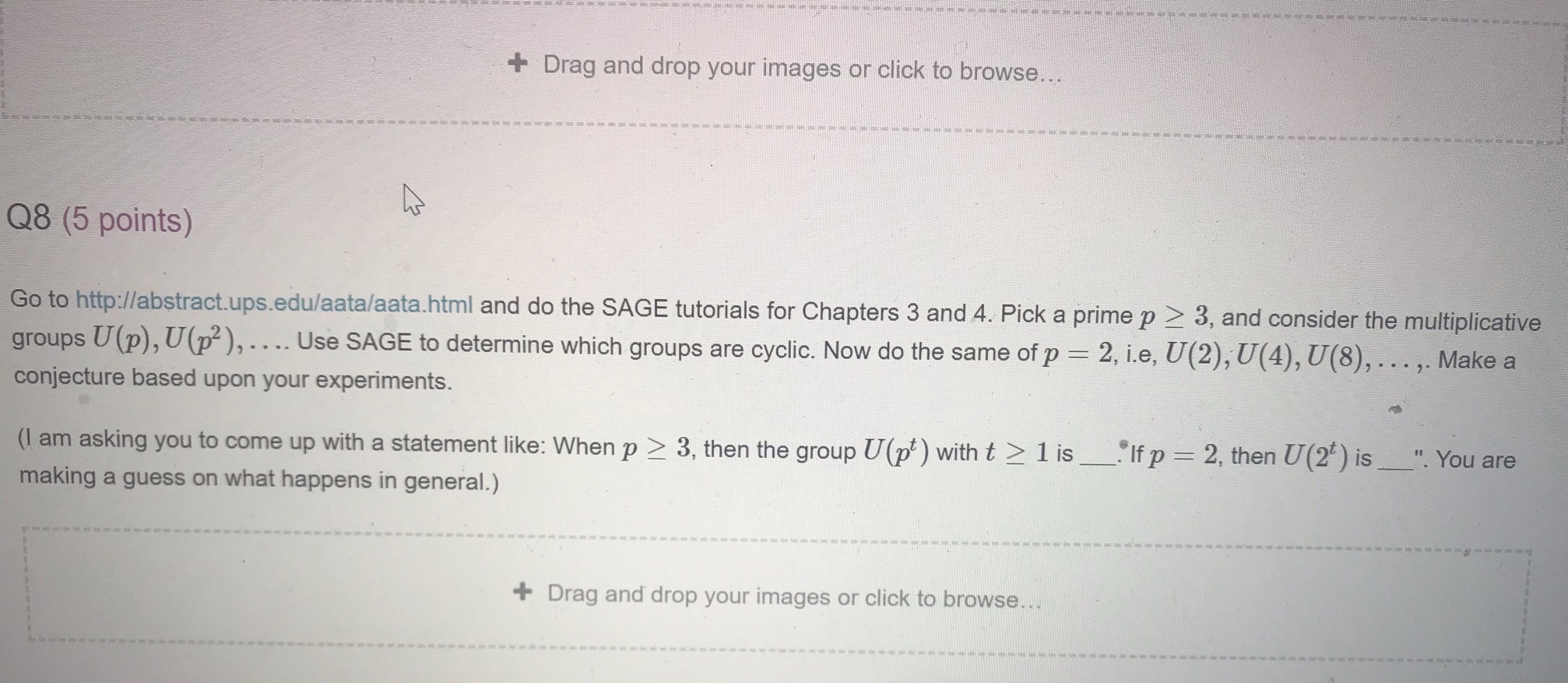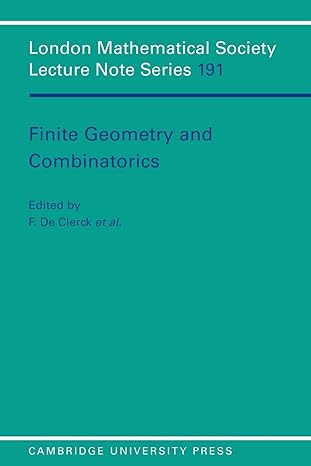Answered step by step
Verified Expert Solution
Question
1 Approved Answer
+ Drag and drop your images or click to browse. . . Q8 (5 points) Go to http://abstract.ups.edu/aata/aata.html and do the SAGE tutorials for Chapters

Step by Step Solution
There are 3 Steps involved in it
Step: 1

Get Instant Access to Expert-Tailored Solutions
See step-by-step solutions with expert insights and AI powered tools for academic success
Step: 2

Step: 3

Ace Your Homework with AI
Get the answers you need in no time with our AI-driven, step-by-step assistance
Get Started


